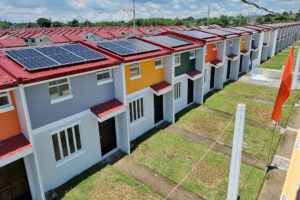THE Energy Regulatory Commission (ERC) said more power consumers are adopting net-metering systems due to the easier registration process.
“We see this growing more especially as the cost of panels go down and as we make registration easier,” ERC Chairperson and Chief Executive Officer Monalisa C. Dimalanta said via Viber.
The ERC recorded 13,189 qualified end-users with a total capacity of 116,292.14 kilowatt-peak (kWp) as of May 31, up from 200 qualified end-users with a total capacity of 1,109.33 kWp in 2015.
The Luzon grid had the biggest such contingent of end-users representing 82,321.40 kWp or 70.79% of the total. This was followed by the Visayas grid with 27,935.33 kWp or 24.02% and the Mindanao grid with 6,035.41 kWp or 5.19%.
The ERC said the number of net-metering qualified end-users totaled 4,125 in 2023, up 121%.
Net metering allows power users that generate their own electricity via renewable energy to sell some of their excess power to the grid, with the proceeds credited against their power bills.
The ERC entered into partnerships through tripartite agreements with local government units, such as Pasig City and Manila Electric Co.; Iloilo City and MORE Electric and Power Corp.
The partnerships seek to establish one-stop shops for net-metering inquiries, consultations, and applications.
The commission also offers regulatory guidance and expedites the certificate of compliance application process, which is essential for the operation of generation facilities.
“Consumers do not need to travel to our offices to process their applications,” Ms. Dimalanta said. — Sheldeen Joy Talavera
